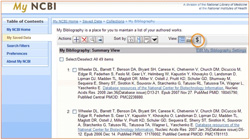There is now a shortened review cycle for applications from new investigators. To give these applicants more time to prepare resubmissions (A1) between review cycles, NIH will accelerate the release of summary statements for the initial applications (A0). It has also pushed back the special submission date for new investigators to give them at least 30 days to prepare the revised application. Please refer to NOT-OD-11-057 for more details.
While we’re on this topic, I’d like to clear up confusion about when to submit a new application versus a resubmission. New applications and resubmissions typically differ in several important aspects (due date, introduction, etc.). For most funding opportunity announcements (FOAs), deciding whether to prepare a new submission (A0) or a resubmission (A1) is straightforward. But sometimes it’s not!
Here’s a little clarification. All applications in response to a request for applications (RFA) are considered new, unless the RFA says that applications to previous versions of the RFA may be submitted as resubmissions. For example, if NIGMS has issued an RFA and then decides to continue it via a non-RFA FOA, all applications to the FOA must be new the first time they are submitted. Similarly, if a PI continues an awarded U series application as an R series application (e.g., U01 to R01 after the original U01 FOA expired), then the R series application must be new.
Finally, applications to continue work started in a special Recovery Act activity code (RC1, RC2, RC3, RC4, etc.) should be submitted as new applications. Recovery Act competitive revision (S1) applications that were submitted to an existing FOA are an exception. They must be submitted as resubmissions (S1A1) and are subject to the NIH resubmission limit policy.
For those of you interested in a broader discussion of resubmissions, see the “Early Data on the A2 Sunset” blog post from OER director Sally Rockey.



 NIH has announced a significant upgrade to the citation management capability of investigators’ personal profiles in the eRA Commons.
NIH has announced a significant upgrade to the citation management capability of investigators’ personal profiles in the eRA Commons.